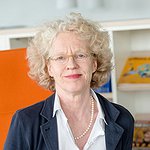How to exhibit Religion?

During the period of the fellowship I was hoping to deepen my research focus on "Religion and Art? Contemporary Interpretations of Veiling, Calligraphy, Mashrabiyya, etc." or (another working title) "Neo-Orientalism and postcolonial criticism in current exhibitions".
As is often the case, things never turn out as planned: after the first intensive research that would soon be adopted in graceful words, the events began: The international HERA research project "Iconic religion. How Imaginaries of Religious Encounter structure Urban Space" was granted approval! The interdisciplinary research group focuses on religious icons and icons of religious encounter in the metropoles Amsterdam, Berlin and London. In order to consider the complex nature of icons and to analyse how the religious dimension may become dominant over other dimensions of meaning, Iconic Religion combines spatial, material-aesthetic, visual analysis, and communicative-semiotic approaches with discourse analysis and reception studies. As a result of the approved project, my work here in Bochum shifted to the question of how to exhibit religion, for part of the "Iconic Religion" project includes the concept for an exhibition, as a form of knowledge transfer the exhibition is to show about 100 photos bundling the results of the international research. Photographs are constantly shifting between documentation and interpretation, that means they depict both an interpreted and a documented reality. The exhibition in the HERA-project is about to face a great challenge! It aims to transfer and produce knowledge. In order to doing so the project will firstly integrate religious communities. Thus, the decision to choose particular photos could be discussed in advance with members of the local religious communities. Secondly it will use participatory methods, for instance focus groups that will be deployed in the course of developing the exhibition. Thirdly the project will foster communication between the exhibition professionals and potential visitors that will give rise to a multiperspective view on the photographs presented, reflecting the complexity of religious and cultural encounters. All these steps and approaches will lead to the message: Exhibitions can be a space for transferring knowledge about the dynamics in the history of religions.
Affiliated Persons


